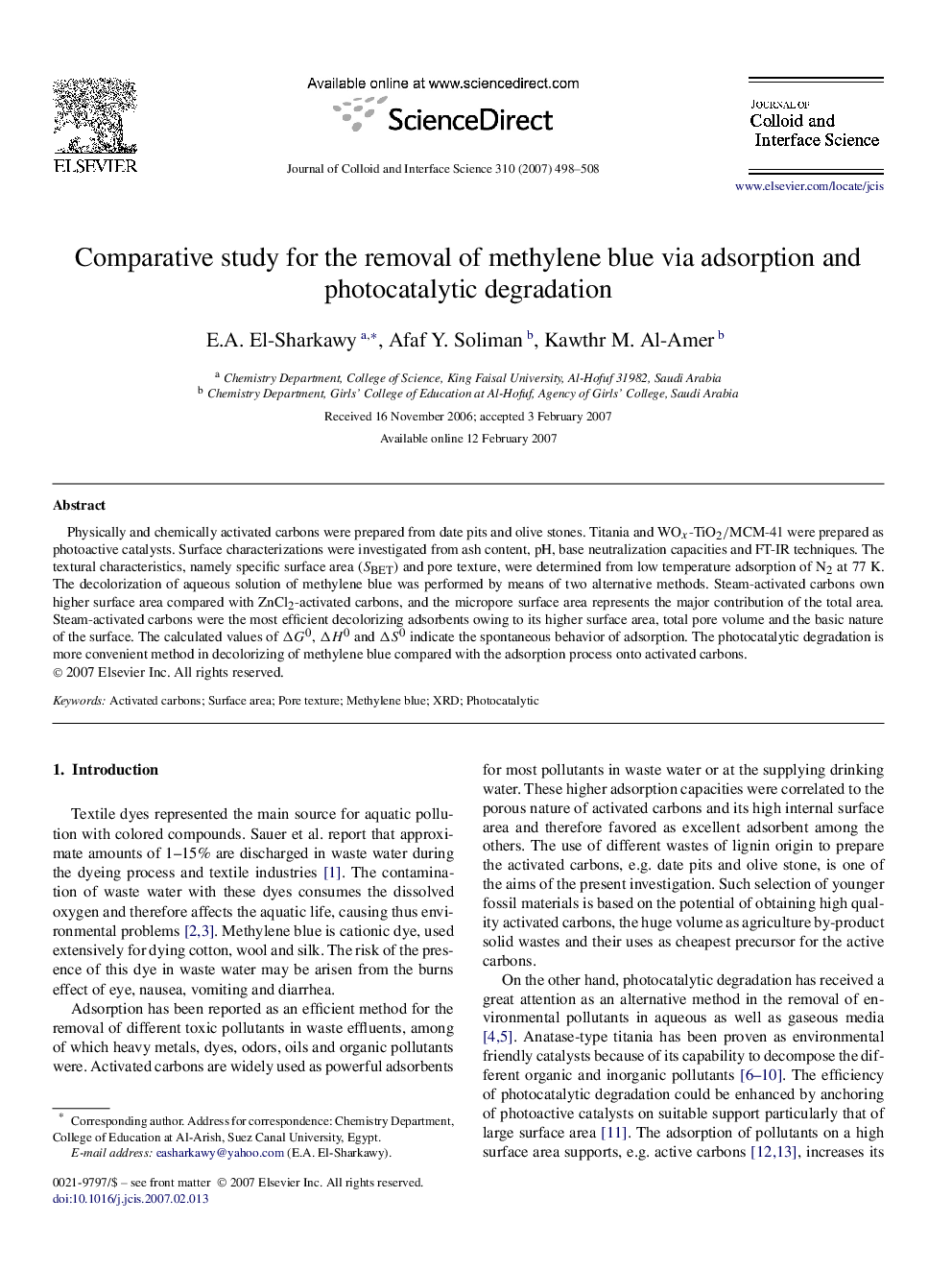| Article ID | Journal | Published Year | Pages | File Type |
|---|---|---|---|---|
| 612438 | Journal of Colloid and Interface Science | 2007 | 11 Pages |
Physically and chemically activated carbons were prepared from date pits and olive stones. Titania and WOx-TiO2/MCM-41 were prepared as photoactive catalysts. Surface characterizations were investigated from ash content, pH, base neutralization capacities and FT-IR techniques. The textural characteristics, namely specific surface area (SBETSBET) and pore texture, were determined from low temperature adsorption of N2 at 77 K. The decolorization of aqueous solution of methylene blue was performed by means of two alternative methods. Steam-activated carbons own higher surface area compared with ZnCl2-activated carbons, and the micropore surface area represents the major contribution of the total area. Steam-activated carbons were the most efficient decolorizing adsorbents owing to its higher surface area, total pore volume and the basic nature of the surface. The calculated values of ΔG0ΔG0, ΔH0ΔH0 and ΔS0ΔS0 indicate the spontaneous behavior of adsorption. The photocatalytic degradation is more convenient method in decolorizing of methylene blue compared with the adsorption process onto activated carbons.
Graphical abstractAdsorption/desorption isotherms of N2 adsorption onto activated carbons at 77 K.Figure optionsDownload full-size imageDownload as PowerPoint slide
